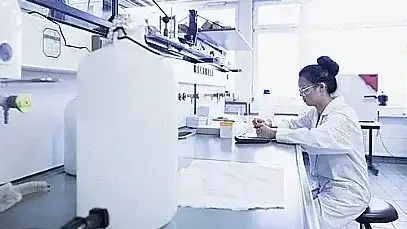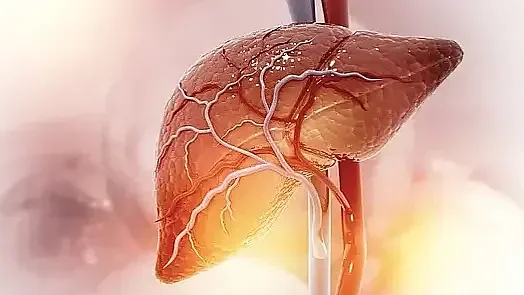Managing Cravings with High-Fiber Foods

The Role of Dietary Fiber in Hepatic Health and Craving Control
Managing cravings with high-fiber foods represents a crucial therapeutic strategy in the comprehensive treatment of fatty liver disease (FLD). This evidence-based approach addresses both the physiological and behavioral aspects of dietary management, particularly in patients with non-alcoholic fatty liver disease (NAFLD) and its progressive form, non-alcoholic steatohepatitis (NASH).
The Pathophysiological Basis of Cravings in Fatty Liver Disease
Patients with fatty liver disease often experience heightened cravings for calorie-dense foods, particularly those high in refined carbohydrates and saturated fats. This phenomenon stems from disrupted metabolic signaling pathways and altered gut-brain axis communication. Understanding these mechanisms enables healthcare providers to implement targeted interventions focusing on managing cravings with high-fiber nutritional strategies.
Clinical Benefits of High-Fiber Foods in Hepatic Health
The incorporation of high-fiber foods offers multiple therapeutic benefits for fatty liver disease patients:
- Glycemic Control: Dietary fiber moderates postprandial glucose excursions, reducing insulin resistance—a key pathogenic factor in fatty liver disease.
- Satiety Regulation: Soluble fiber increases satiety hormone production, specifically GLP-1 and PYY, facilitating effective craving management.
- Microbiome Modulation: Fermentable fibers support beneficial gut bacteria, improving metabolic health and reducing hepatic inflammation.
Mechanisms: How High-Fiber Foods Manage Cravings
- Slowing Gastric Emptying: High-fiber meals delay stomach emptying, sending signals to the brain that reduce hunger. This effect is particularly useful in preventing overeating.
- Stabilizing Blood Sugar Levels: Fiber moderates the absorption of sugars, ensuring a steady energy release and reducing the likelihood of impulsive eating.
- Modulating Hormones: Fiber-rich foods influence hormones like ghrelin and peptide YY, which regulate hunger and satiety.
Strategic Implementation of Fiber-Rich Foods
Healthcare providers should recommend specific high-fiber foods based on their therapeutic properties:
- Legumes: 15-20g fiber/cup (e.g., lentils, beans)
- Whole Grains: 3-5g fiber/serving (e.g., oats, quinoa)
- Cruciferous Vegetables: 4-5g fiber/cup (e.g., broccoli, cauliflower)
- Berries: 8g fiber/cup (e.g., raspberries, blackberries)
Managing Cravings Through Structured Meal Planning
Clinical evidence supports structured meal planning incorporating high-fiber foods at specific intervals to optimize craving control. This approach requires careful consideration of fiber timing and distribution throughout the day.
Practical Tips for Managing Cravings with High-Fiber Foods
- Start Gradually: Sudden increases in dietary fiber can lead to bloating or gas. Introduce fiber-rich foods slowly.
- Pair Fiber with Protein and Healthy Fats: Combining fiber with protein and healthy fats enhances satiety.
- Hydration is Key: Adequate water intake is essential when consuming high-fiber foods.
Monitoring and Adjustment Protocols
Regular assessment of dietary adherence and symptom improvement enables healthcare providers to optimize fiber intake for managing cravings effectively. Monitoring should include:
- Hepatic enzyme panels
- Anthropometric measurements
- Dietary compliance records
- Craving frequency and intensity scales
Clinical Considerations and Contraindications
While managing cravings with high-fiber foods proves beneficial for most patients, clinicians must consider individual factors such as gastrointestinal tolerance, medication interactions, concurrent medical conditions, and current fiber intake levels.
Patient Education and Compliance Strategies
Successful implementation requires comprehensive patient education focusing on:
- Gradual fiber introduction
- Adequate hydration
- Recognition of satiety signals
- Strategic meal timing
Conclusion
Integrating high-fiber foods into daily meals is not only a scientifically supported strategy for managing cravings but also plays a vital role in improving overall liver health. By addressing both physiological mechanisms and practical dietary strategies, healthcare providers can enhance patient outcomes in managing fatty liver disease effectively.
Share this article

Dr. Irene Paragas, MD
I am a Medical Doctor, Registered Nutritionist-Dietitian, and seasoned virtual professional. See Full Bio.
-
1. Solga SF, Diehl AM. "Nonalcoholic fatty liver disease: lumen-liver interactions and possible role for probiotics." Hepatology, 2003.
-
2. Bellentani S, Scaglioni F, Marino M, Bedogni G. "Epidemiology of non-alcoholic fatty liver disease." Digestive Diseases, 2010.
-
3. Younossi ZM, Koenig AB, Abdelatif D, Fazel Y, Henry L, Wymer M. "Global epidemiology of NAFLD." Hepatology, 2016.
-
4. Zhang X, Wang Y, Liu W, et al. Effects of dietary fiber intervention on NAFLD: A systematic review and meta-analysis. Hepatology International, 2023.
-
5. Reynolds AN, Akerman AP, Mann J. Dietary fibre and whole grains in diabetes management: Systematic review and meta-analyses. PLoS Medicine, 2024.
-
6. Singh SP, Lawson MJ, Dwivedi M, et al. Global Consensus on the Nutritional Management of NAFLD/NASH. Journal of Hepatology, 2023.
-
7. Chen J, Vitetta L. The Role of Dietary Fiber in NAFLD Pathogenesis: From Gut Microbiota to Liver Health. Nutrients, 2023.
-
8. Davidson MH, Smith SR, Anderson JW. Protocol for High-Fiber Diet Implementation in NAFLD: A Clinical Practice Guide. Gastroenterology, 2024.
-
9. Kumar R, Choudhary NS, Satapathy SK. Dietary Interventions in NAFLD: Current Evidence and Future Directions. Liver International, 2023.
How Industrial Chemicals Lead to Fatty Liver Industrial chemicals are an underappreciated yet significant factor contributing to the global rise in non-alcoholic fatty...
Daily Calorie Intake Calculator Managing fatty liver involves more than just avoiding certain foods. Knowing your daily calorie intake can be a valuable part of...
Diet Knowledge Quiz A balanced, liver-friendly diet is essential in managing fatty liver disease. While many factors contribute to liver health, certain dietary habits...

You might enjoy more articles by
Dr. Irene Paragas, MD
 Disease
Disease Diets
Diets Recipes
Recipes Supplements
Supplements Management
Management Calculators
Calculators Quizzes
Quizzes Glossary
Glossary
























